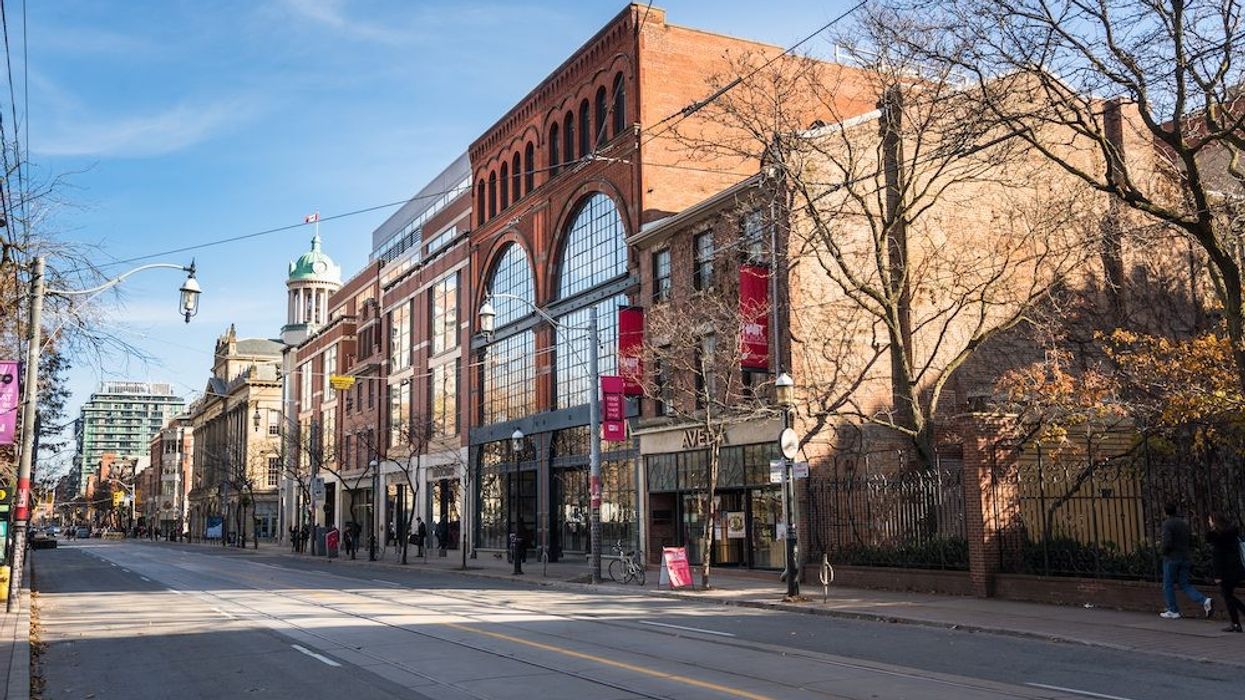Much has been made of brick and mortar retail’s demise over, roughly, the last five years, during which time the sector has indisputably incurred heavy losses, but writing it off as a relic would be premature, says the head of a major investment management firm.
“People are returning to the public realm and they want, among other things, the in-store shopping experience, to eat in restaurants, and to be with other people. We really believe people want that kind of experience, and also that activity in Toronto will come back bigger and better than ever before,” said Jordan Pearl, President of Pearl Group, which is in the process of adding $150M of GTA-based commercial real estate to its portfolio.
Among the properties Pearl Group is looking to acquire through its inaugural growth fund are an industrial facility in Mississauga, mixed-use and office buildings in the east end of downtown Toronto, some of which Pearl Group is retrofitting into modern, turnkey offices for small and mid-sized companies.
But the 39-year-old company’s bread and butter has always been retail, Pearl says, and while e-commerce began stealing market share from brick and mortar several years before COVID-19 struck, to say nothing of the pandemic’s exacerbation of that trend, he is emphatic that retail in Toronto’s urban core remains a sound investment.
“I am very bullish on retail. Throughout the pandemic, we had minimal turnover in our stores. There are plenty of people who were looking to capitalize on retail vacancies during the pandemic, but they couldn’t find any space,” Pearl said, adding that government subsidies helped buoy small businesses during the last couple of years.
“I don’t think it’s that much of a leap of faith when it comes to our retail portfolio because we’ve focused our investments on great locations like King and Queen Streets, Yonge and Eglinton, and Yorkville.”
That the string of pandemic-induced lockdowns couldn’t finish off retailers is an auspicious sign, especially in light of news this week that, after 777 days, Toronto ended its COVID-19 emergency declaration.
Pearl isn’t the only one who’s bullish on Toronto’s retail sector. Victoria Joly, Distinctive Real Estate Advisors Inc.’s founding partner and broker of record, says the retail sector’s fundamentals are promising, noting that major arterial locations in the city’s urban core are renting for around $40 per sq. ft.
“The death of retail is overstated,” she said.
Joly says storefronts on major streets in the city are both coveted and scarce. Even when prolonged pandemic strictures were in effect, countless businesses -- think an events space -- proved themselves resilient and, where possible, pivoted to offer different services.
Even during the pandemic, there was no shortage of businesses in the professional services sector searching in vain for grade-level storefronts on major arteries. It stands to reason that their search has become immensely more arduous with COVID restrictions and mandates receding in the rear-view mirror more with each passing day.
That COVID-19 is responsible for a sputtering worldwide supply chain isn’t news -- nor are financial tribulations in the brick and mortar segment of the retail sector, for that matter -- however, scant attention is being paid to burgeoning synergies between physical retail stores and e-commerce. As supply chain bottlenecks persist with nary an indication that goods will soon resume distributing seamlessly as they once did, clothing stores, for example, which also have virtual presences, are competing for warehouse space to carry extra inventory. According to a Colliers survey, ‘Omnichannel’ retail, which conflates e-commerce with brick and mortar, has demonstrated that brick and mortar stores have become crucial to warehousing.
Although that harmony primarily pertains to carrying adequate supplies of inventory, a newer example of it is curbside pickup, which began during the pandemic. Then there’s also the simpler explanation for why buying items physically is superior to online purchases—from a merchandising perspective, Joly says certain items, like phone chargers, for example, make for simpler online orders, but trying on shoes or ensuring new clothes fit ever-growing children isn’t so easy.
“We have supply chain issues, which we all know, so there’s not a huge selection when you do go to stores, but you get to try things on—buy-to-fit, so to speak,” Joly said. “One thing consumers and patrons are looking for is to not give up convenience. People often call ahead of time asking if certain items are in stock. The retail and online experience are becoming far more harmonious and interconnected.”
That’s why Pearl Group’s strategy is, in fact, quite simple to understand: it is satisfying needs in the marketplace by using prime retail locations to enhance visibility.
“Businesses are looking to rent storefronts but can’t find anything,” Pearl said. “That’s why we’re big believers in retail.”


















